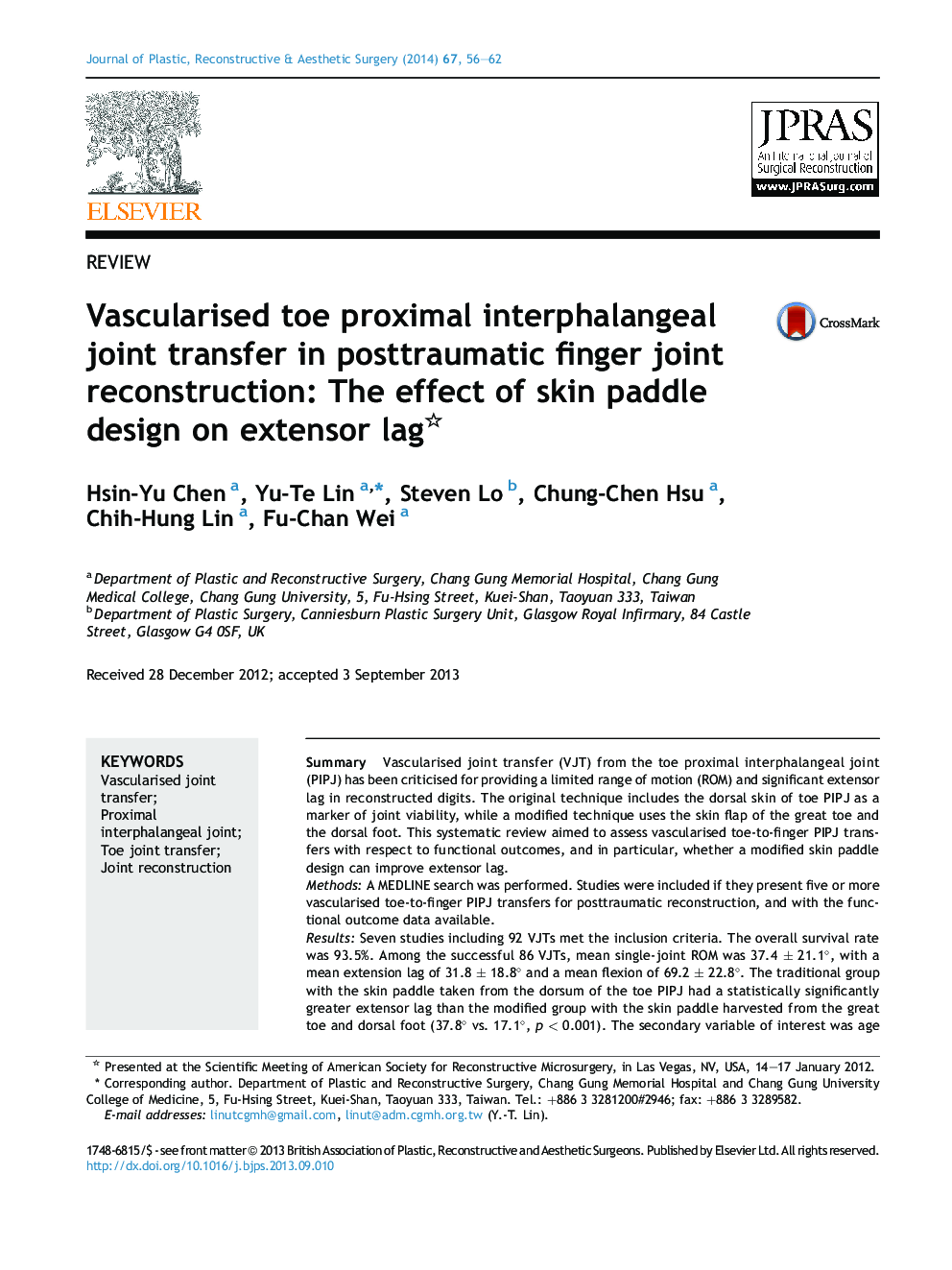| کد مقاله | کد نشریه | سال انتشار | مقاله انگلیسی | نسخه تمام متن |
|---|---|---|---|---|
| 4117759 | 1270316 | 2014 | 7 صفحه PDF | دانلود رایگان |

SummaryVascularised joint transfer (VJT) from the toe proximal interphalangeal joint (PIPJ) has been criticised for providing a limited range of motion (ROM) and significant extensor lag in reconstructed digits. The original technique includes the dorsal skin of toe PIPJ as a marker of joint viability, while a modified technique uses the skin flap of the great toe and the dorsal foot. This systematic review aimed to assess vascularised toe-to-finger PIPJ transfers with respect to functional outcomes, and in particular, whether a modified skin paddle design can improve extensor lag.MethodsA MEDLINE search was performed. Studies were included if they present five or more vascularised toe-to-finger PIPJ transfers for posttraumatic reconstruction, and with the functional outcome data available.ResultsSeven studies including 92 VJTs met the inclusion criteria. The overall survival rate was 93.5%. Among the successful 86 VJTs, mean single-joint ROM was 37.4 ± 21.1°, with a mean extension lag of 31.8 ± 18.8° and a mean flexion of 69.2 ± 22.8°. The traditional group with the skin paddle taken from the dorsum of the toe PIPJ had a statistically significantly greater extensor lag than the modified group with the skin paddle harvested from the great toe and dorsal foot (37.8° vs. 17.1°, p < 0.001). The secondary variable of interest was age of the patient at time of transfer (children vs. adults). There was no significant difference in ROM between younger (≤16 years) and older patients (>16 years).ConclusionsThis systematic review suggests that extensor lag may be improved by using the modified skin paddle design by harvesting it from the great toe and the dorsal foot. This effect may be mediated by the preservation of the native extensor tendon apparatus in the finger.
Journal: Journal of Plastic, Reconstructive & Aesthetic Surgery - Volume 67, Issue 1, January 2014, Pages 56–62